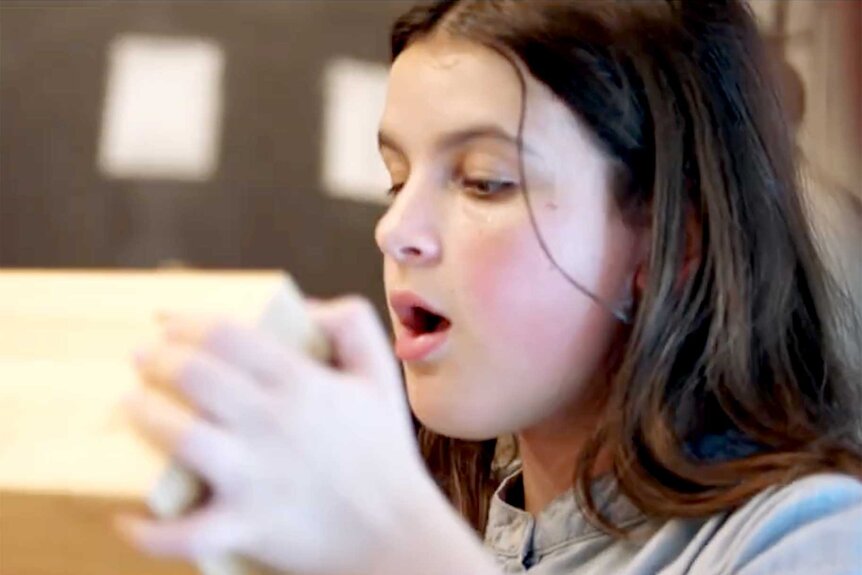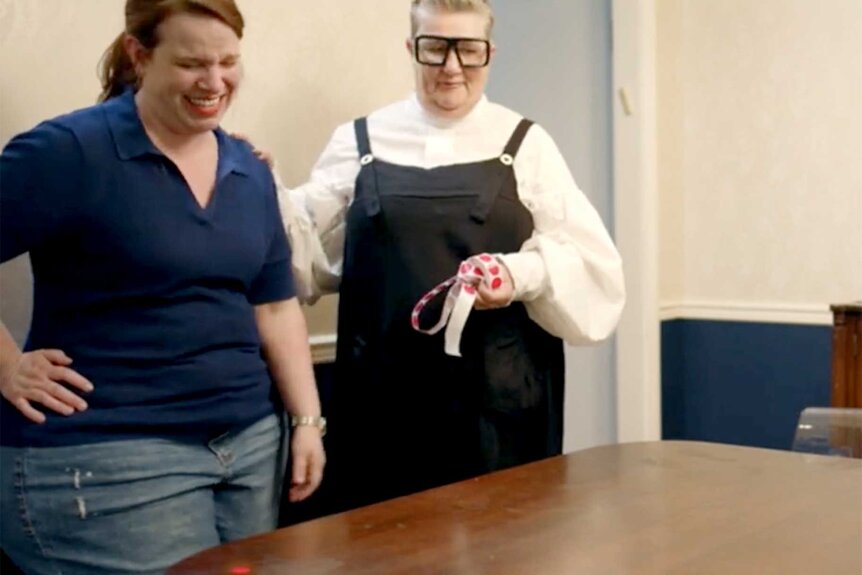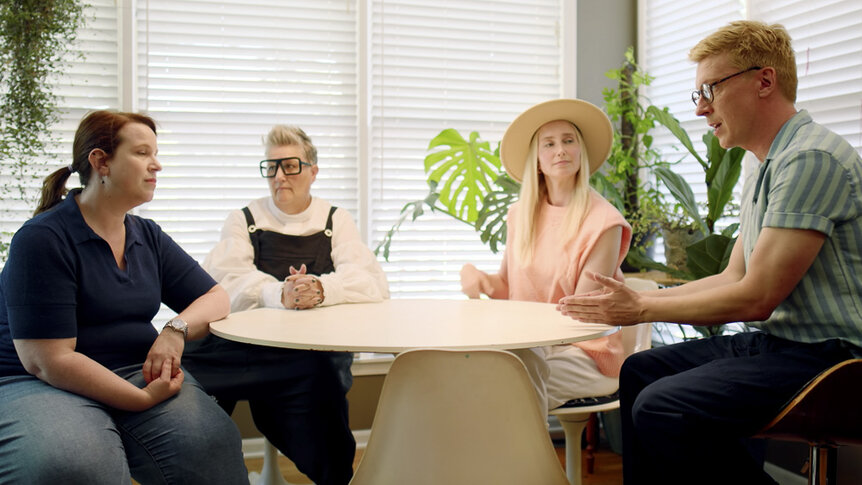10 Decluttering Tips We Learned from Watching The Gentle Art Of Swedish Death Cleaning
Everyone could use a little help when it comes to decluttering. That’s where The Gentle Art of Swedish Death Cleaning, now streaming on Peacock, comes in.

Whether you’re preparing for a move, cleaning and organizing after the death of a loved one — or your closets are just overflowing — everyone could use a little help when it comes to decluttering your home.
That’s where The Gentle Art of Swedish Death Cleaning comes in, the Amy Poehler-produced home improvement show that’s streaming on Peacock.
RELATED: What is Swedish Death Cleaning? Everything You Need To Know
Bravo is set to air three episodes of the series on Thursday nights, beginning with “What Lies Beneath” — about how one man struggles to clean out his parents’ belongings that he’s been storing in his basement since their deaths — on August 17 at 10:30 p.m. ET/PT.
It'll be followed by “Confessions of a Lounge Singer” on August 24, and “F*ck Cancer” on August 31, in the same time slot.
While the subjects on the reality series have the help of three experts to guide them, why should you miss out on the best of their advice? Style & Living has combed through all eight episodes, plucking out the best tips and tricks to help you get your home — and life — in order.
So, check out our list below, and then get to work.
Don’t Want to Trash Vintage Costumers? Donate Them
In the first episode, former lounge singer Suzi Sanderson has an abundance of dramatic wardrobe pieces — from feather boas to a sequined American flag jacket. Since there's no one in her life who could have pulled off the looks on a day-to-day basis, the Swedish Death Cleaners donated them to a drag show, where performers later strutted in Sanderson’s old clothes. If you’ve got a lot of over-the-top pieces, see if a local drag show or theater group can use them.
For Items of Sentimental Value, Just Keep Those in the Best Shape
Sanderson also had trouble letting go of an afghan blanket made by her grandmother because it was dear to her heart. Since she had several of her grandma’s afghans, Ella Engström, the “organizer” on the show, eventually convinced Sanderson to give up a few in great condition to other relatives who would appreciate them. Ella also advised choosing one that's in good shape to keep for yourself, and then tossing any that are ripped and worn.
Make a Just-For-Me Box
Another way to organize mementos of loved ones is to place them in a pretty “Just-For-Me” box that you can visit when you need a reminder of them. Having them in one place, with a note explaining the contents, also lets whoever is cleaning up your home when you pass know that while these items have special value to you, they can be tossed when you’re gone.
RELATED: Here’s Why Amy Poehler Appreciates Swedish Death Cleaners: “They’re So Direct”
Too Many Photos? Send Them to People in the Pictures
If you’re sorting through tons of photos left behind by deceased loved ones, or want to whittle down your own, simply start handing or mailing some out to friends and relatives also in the pictures.
Highlight Objects of Sentimental Value
If you’re holding onto a lot of items from the past, instead of stuffing them in an attic or stashing them all together, lose the bulk of them and choose a few to display prominently. Katarina Blöm, who serves as the psychologist on the show, says, “This is really the core of Swedish Death Cleaning, to bring out the things that actually give you a type of sentiment, that you enjoy.” In Episode 1, that meant hanging a large smiling headshot of Sanderson from her standup comedy shows front and center on a wall, and displaying a few meaningful postcards decoratively on a table rather than stuffing them in drawer.
RELATED: This is the Book That Inspired The Gentle Art of Swedish Death Cleaning Show
Make a “Dilemma Box”
In Episode 3, a mom who inherited a ton of pieces from her own mother and other family members has trouble deciding what should stay and go. Ella recommends putting the undecided-upon items in a “dilemma box.” “One month or two months from now, I will go back and see how it feels,” Ella says. “And if you haven’t missed the things when the deadline comes, that’s a clear sign to get rid of it.”
Just Say No
You know, you don’t have to take in those passed-down items just because a family member suggests you do. “When it comes to ugly things, you say, ‘No thank you,’” Ella says in Episode 3 in regard to furniture being forced on you by relatives.
Let Go of the Guilt
If you throw out or give away items your loved ones wanted you to keep, don’t feel bad. As Katarina explains to the subject of Episode 3, Lindsey, though her mom wanted her to keep the family’s furniture, what she really wanted to ensure was that Lindsey had a fulfilled life. “Your mom — she kept all of these things with the best intentions,” Katarina says. “She was just fighting for you to get a better life. And sitting here, around this table right now, enjoying this dinner together, it’s really just honoring her struggle, and all her good efforts.” Lindsey gets the point, saying, “One of the best things of this experience is realizing that my life is the inheritance — not the stuff.”
RELATED: How to Fika Like a Swedish Death Cleaner, and How it Differs from American Coffee Breaks
Visit a Dump
Yes, you read that right. Episode 5 presents a challenge when the subject, Godfrey, doesn’t want to lose any of the stuff he’s been saving. So the Death Cleaners take him to a landfill to show him mounds of trash. “If you don’t take care and decide about your stuff while you’re still well and alive, this might be where everything goes once you’re dead,” Katarina says. Johan Svenson, the designer expert on the show, drives the point home, saying it’s better to give away some of what you’ve been holding on to for family and friends while you’re still alive.
Reupholster a Chair
“Reupholstering is a great way to upcycle old furniture,” Johan says in Episode 5. So, if you’ve got torn, stained chairs or couches sitting around, give them a new, useful life. “The chair that used to belong to Godfrey’s grandmother was in good shape,” Johan pointed out, “it just needed new fabric and a new cushion.”







